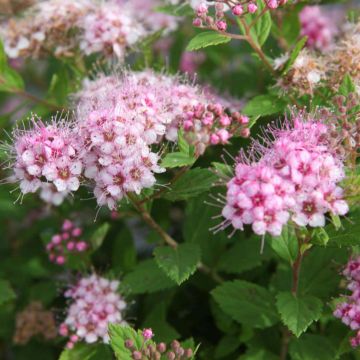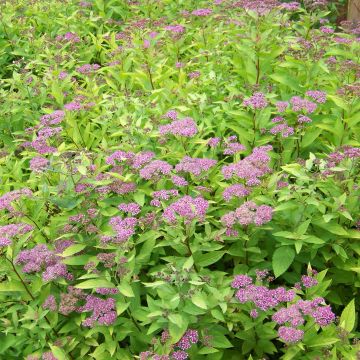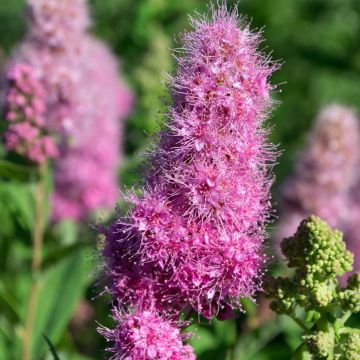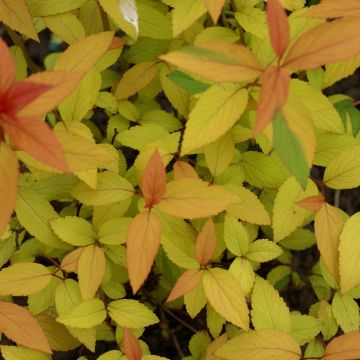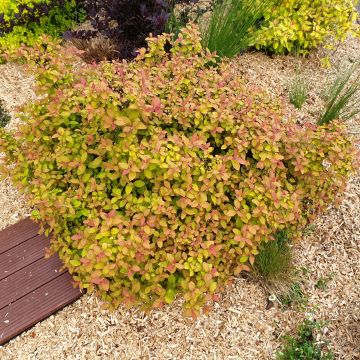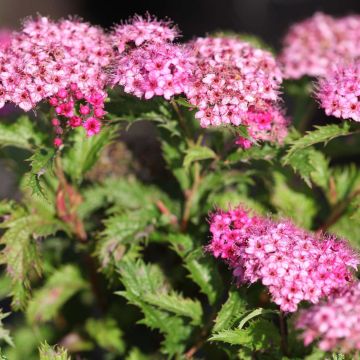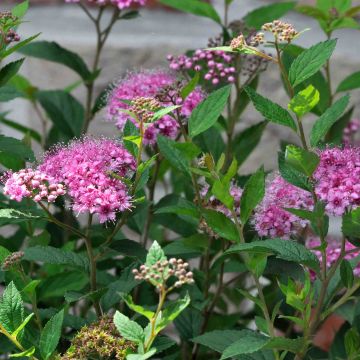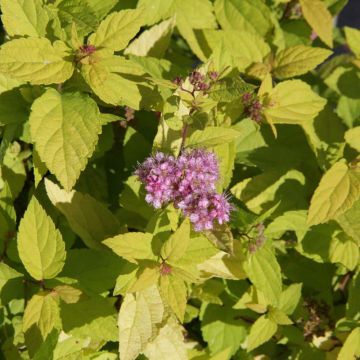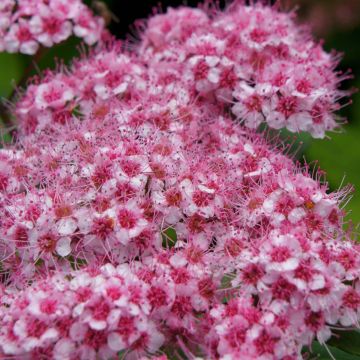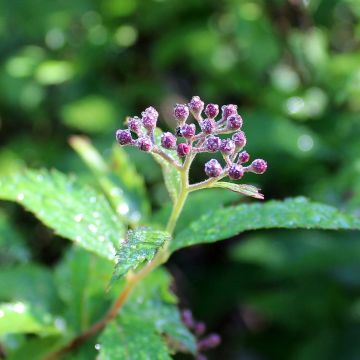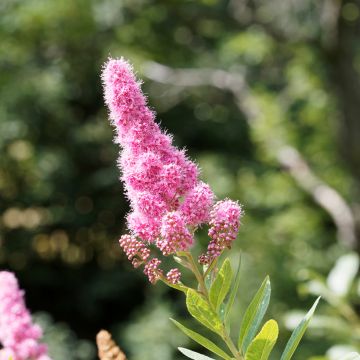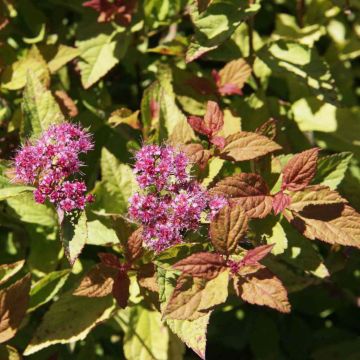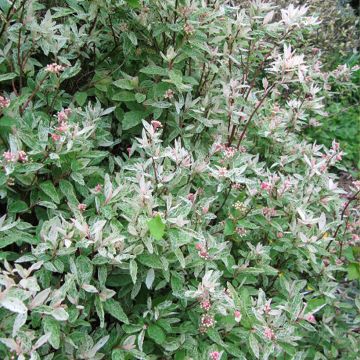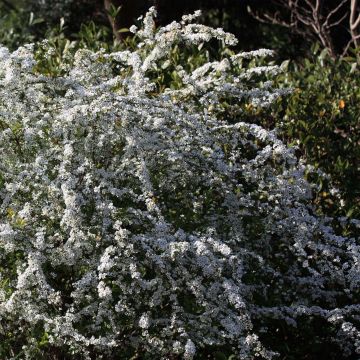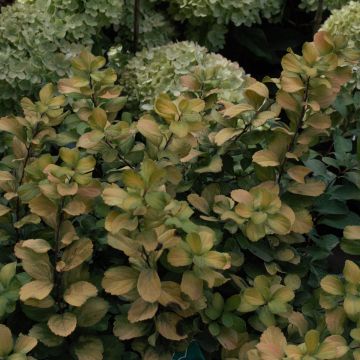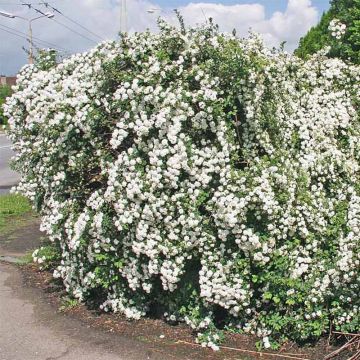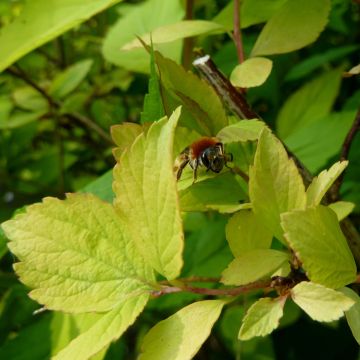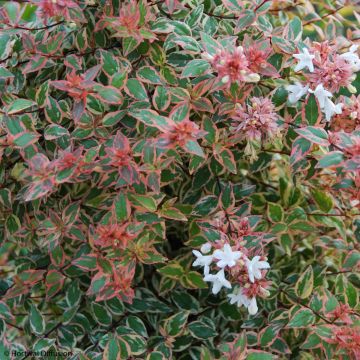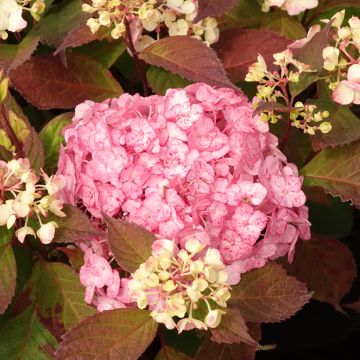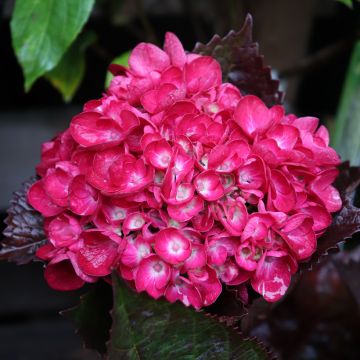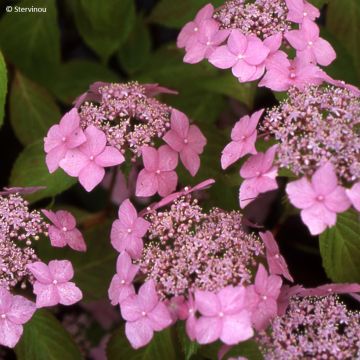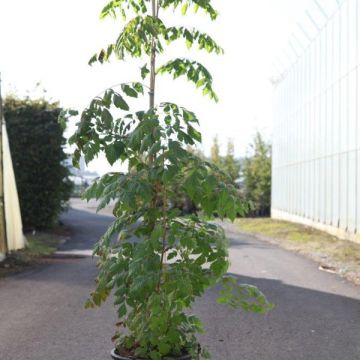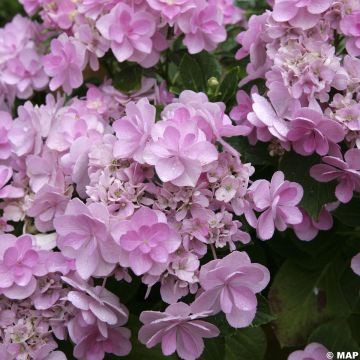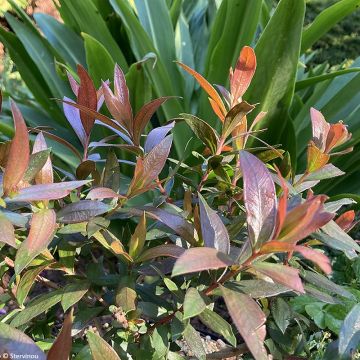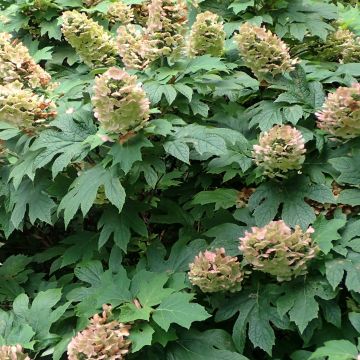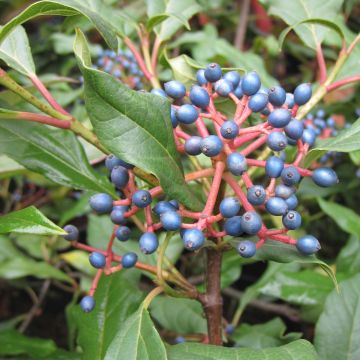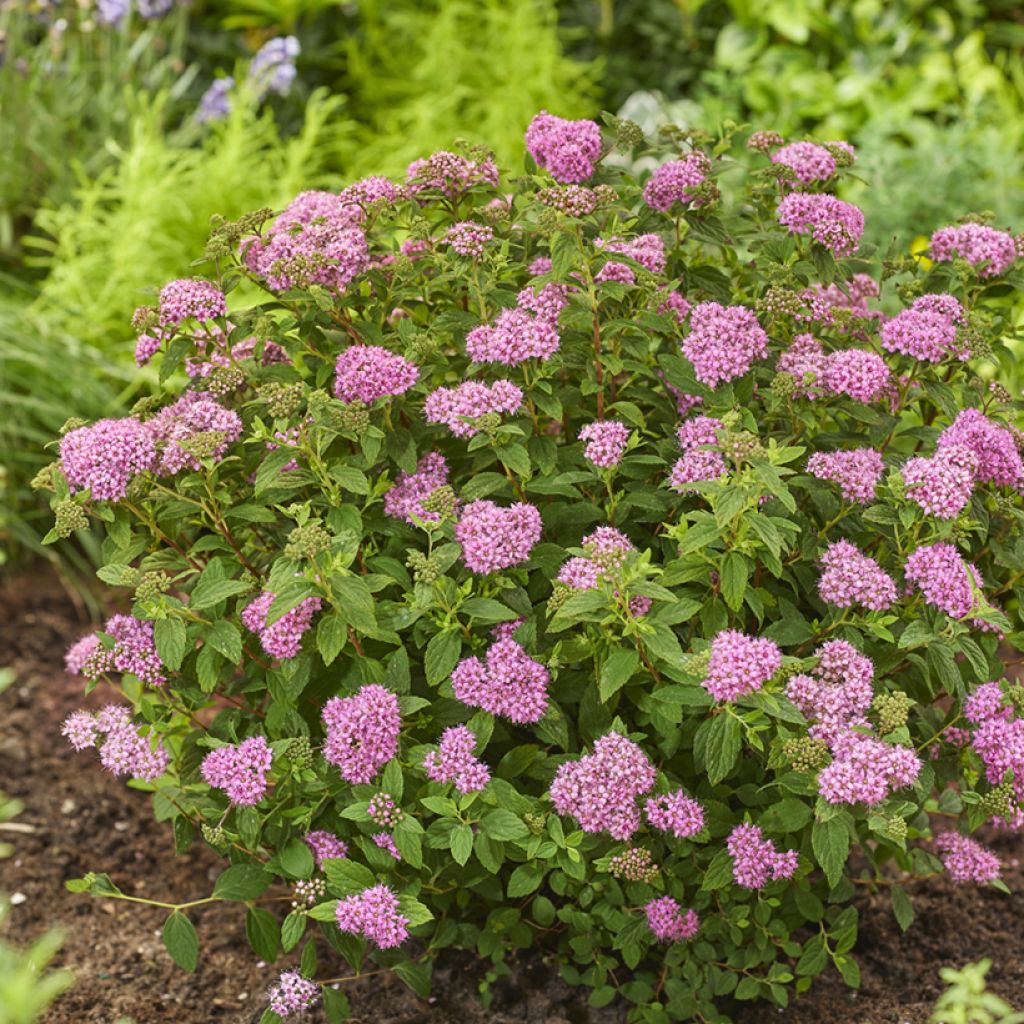

Spiraea japonica Fenna - Japanese Spiraea
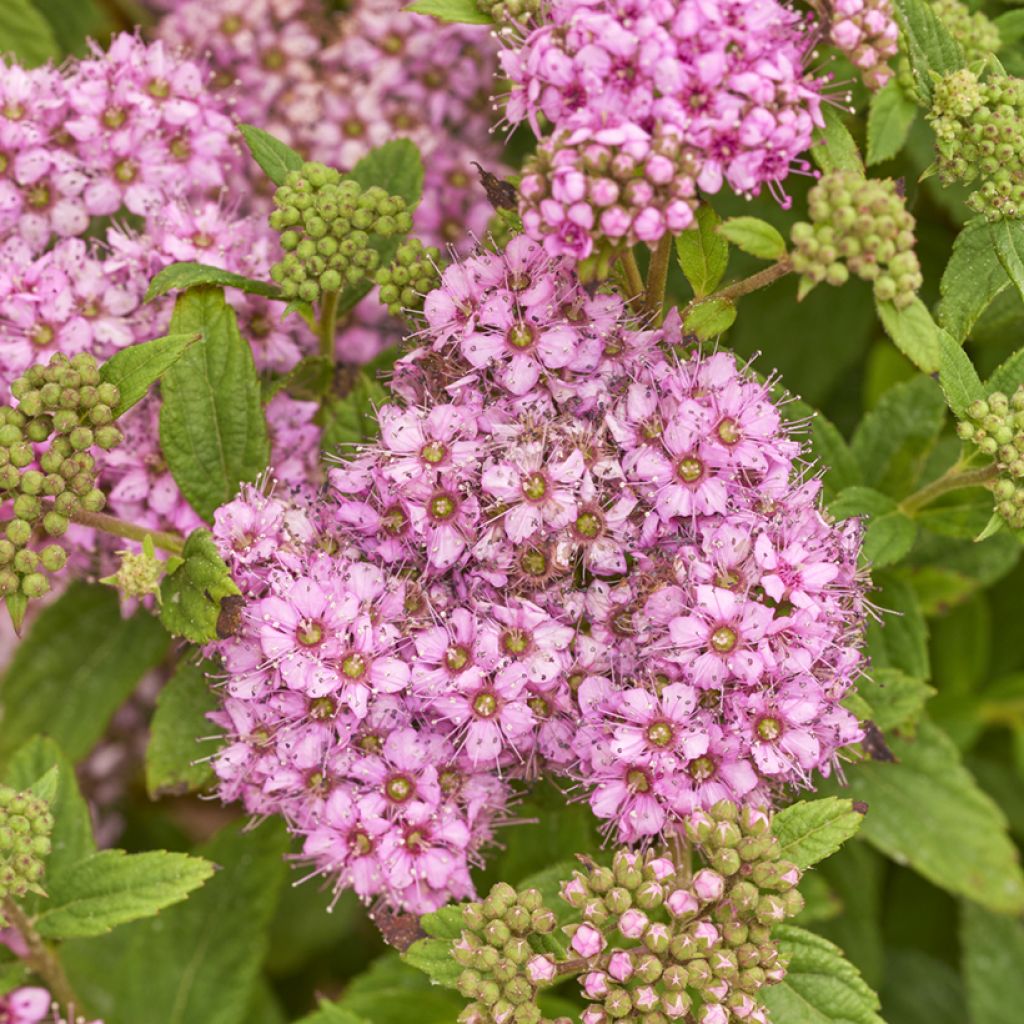

Spiraea japonica Fenna - Japanese Spiraea
Spiraea japonica Fenna - Japanese Spiraea
Spiraea japonica Fenna® PBR EU 20221444
Japanese Spiraea, Japanese Meadowsweet
Why not try an alternative variety in stock?
View all →This plant carries a 24 months recovery warranty
More information
We guarantee the quality of our plants for a full growing cycle, and will replace at our expense any plant that fails to recover under normal climatic and planting conditions.
From €5.90 for pickup delivery and €6.90 for home delivery
Express home delivery from €8.90.
Does this plant fit my garden?
Set up your Plantfit profile →
Description
Japanese spirea or Spiraea japonica 'Fenna' is a dwarf variety that is particularly compact, very robust, and resistant to mildew. Its healthy, medium green foliage is enriched from May to August with a dark pink flowering that does not fade for several weeks. 'Fenna' attracts more pollinators than most spireas. It naturally has a compact, round, and neat shape and prefers a sunny exposure, although it tolerates partial shade.
'Fenna' Japanese spirea, from the rose family, is a cultivar derived from Spirea japonica (synonym Spiraea x bumalda or Spiraea callosa), native to eastern and central China and Japan. The growth of this plant is moderate, and its adult size will not exceed 25 to 30 cm in height and 30 cm in width. Forming a true well-rounded mound, supported by dense and branching vegetation, this variety develops young foliage tinged with bronze that unfolds into small, light and vibrant green leaves, darkening somewhat in summer. This foliage consists of small, oblong and toothed leaves. The particularly numerous flowers are grouped in terminal corymbs measuring 5 cm in diameter, with a velvety appearance and a dark pink colour. This prolonged flowering attracts numerous butterflies, bees, and bumblebees.
Japanese spirea adapts to all climates and soils, but dislikes scorching or overly arid conditions. With its beautiful cushion-like habit and small size, 'Fenna' is ideal in a pot on a balcony or terrace, as well as in the garden, as a border or foreground plant in flower beds. Use it as a ground cover along a pathway or even in a rock garden. Pair it with dwarf roses, with Potentilla fruticosa 'Double Punch Pastel', in front of miniature shrubs like the Dwarf Manchurian Lilac 'Miss Kim' or Weigela 'Nana Purpurea'. Also accompany it with other spireas (Spiraea betulifolia), the Purple Willow, Salix purpurea 'Nana'.
Report an error about the product description
Plant habit
Flowering
Foliage
Botanical data
Spiraea
japonica
Fenna® PBR EU 20221444
Rosaceae
Japanese Spiraea, Japanese Meadowsweet
Cultivar or hybrid
Other Spiraea
Planting and care
Plant the Japanese Spirea Fenna in any soil that is not too dry, rather fertile, well-drained, preferably in the sun, although it tolerates partial shade. The presence of limestone, without excess, is well tolerated. Water well in the first year. Prune in February-March to 10 - 15 cm from the ground: the late winter pruning is essential if you want to obtain a beautiful flowering. Japanese Spiraea are perpetual plants, to promote a second flowering, it is important to lightly prune the plant or remove faded flowers to encourage new growth in late summer, early autumn. This plant blooms on the current year's shoots. To maintain the vigour of the young plant, it is also important to remove old branches at the base in spring. Apply a complete fertiliser in March. Plant the young plants with a spacing of 60 cm at planting, preferably in autumn and winter.
Planting period
Intended location
Care
This item has not been reviewed yet - be the first to leave a review about it.
Summer-flowering shrubs
Haven't found what you were looking for?
Hardiness is the lowest winter temperature a plant can endure without suffering serious damage or even dying. However, hardiness is affected by location (a sheltered area, such as a patio), protection (winter cover) and soil type (hardiness is improved by well-drained soil).

Photo Sharing Terms & Conditions
In order to encourage gardeners to interact and share their experiences, Promesse de fleurs offers various media enabling content to be uploaded onto its Site - in particular via the ‘Photo sharing’ module.
The User agrees to refrain from:
- Posting any content that is illegal, prejudicial, insulting, racist, inciteful to hatred, revisionist, contrary to public decency, that infringes on privacy or on the privacy rights of third parties, in particular the publicity rights of persons and goods, intellectual property rights, or the right to privacy.
- Submitting content on behalf of a third party;
- Impersonate the identity of a third party and/or publish any personal information about a third party;
In general, the User undertakes to refrain from any unethical behaviour.
All Content (in particular text, comments, files, images, photos, videos, creative works, etc.), which may be subject to property or intellectual property rights, image or other private rights, shall remain the property of the User, subject to the limited rights granted by the terms of the licence granted by Promesse de fleurs as stated below. Users are at liberty to publish or not to publish such Content on the Site, notably via the ‘Photo Sharing’ facility, and accept that this Content shall be made public and freely accessible, notably on the Internet.
Users further acknowledge, undertake to have ,and guarantee that they hold all necessary rights and permissions to publish such material on the Site, in particular with regard to the legislation in force pertaining to any privacy, property, intellectual property, image, or contractual rights, or rights of any other nature. By publishing such Content on the Site, Users acknowledge accepting full liability as publishers of the Content within the meaning of the law, and grant Promesse de fleurs, free of charge, an inclusive, worldwide licence for the said Content for the entire duration of its publication, including all reproduction, representation, up/downloading, displaying, performing, transmission, and storage rights.
Users also grant permission for their name to be linked to the Content and accept that this link may not always be made available.
By engaging in posting material, Users consent to their Content becoming automatically accessible on the Internet, in particular on other sites and/or blogs and/or web pages of the Promesse de fleurs site, including in particular social pages and the Promesse de fleurs catalogue.
Users may secure the removal of entrusted content free of charge by issuing a simple request via our contact form.
The flowering period indicated on our website applies to countries and regions located in USDA zone 8 (France, the United Kingdom, Ireland, the Netherlands, etc.)
It will vary according to where you live:
- In zones 9 to 10 (Italy, Spain, Greece, etc.), flowering will occur about 2 to 4 weeks earlier.
- In zones 6 to 7 (Germany, Poland, Slovenia, and lower mountainous regions), flowering will be delayed by 2 to 3 weeks.
- In zone 5 (Central Europe, Scandinavia), blooming will be delayed by 3 to 5 weeks.
In temperate climates, pruning of spring-flowering shrubs (forsythia, spireas, etc.) should be done just after flowering.
Pruning of summer-flowering shrubs (Indian Lilac, Perovskia, etc.) can be done in winter or spring.
In cold regions as well as with frost-sensitive plants, avoid pruning too early when severe frosts may still occur.
The planting period indicated on our website applies to countries and regions located in USDA zone 8 (France, United Kingdom, Ireland, Netherlands).
It will vary according to where you live:
- In Mediterranean zones (Marseille, Madrid, Milan, etc.), autumn and winter are the best planting periods.
- In continental zones (Strasbourg, Munich, Vienna, etc.), delay planting by 2 to 3 weeks in spring and bring it forward by 2 to 4 weeks in autumn.
- In mountainous regions (the Alps, Pyrenees, Carpathians, etc.), it is best to plant in late spring (May-June) or late summer (August-September).
The harvesting period indicated on our website applies to countries and regions in USDA zone 8 (France, England, Ireland, the Netherlands).
In colder areas (Scandinavia, Poland, Austria...) fruit and vegetable harvests are likely to be delayed by 3-4 weeks.
In warmer areas (Italy, Spain, Greece, etc.), harvesting will probably take place earlier, depending on weather conditions.
The sowing periods indicated on our website apply to countries and regions within USDA Zone 8 (France, UK, Ireland, Netherlands).
In colder areas (Scandinavia, Poland, Austria...), delay any outdoor sowing by 3-4 weeks, or sow under glass.
In warmer climes (Italy, Spain, Greece, etc.), bring outdoor sowing forward by a few weeks.


































